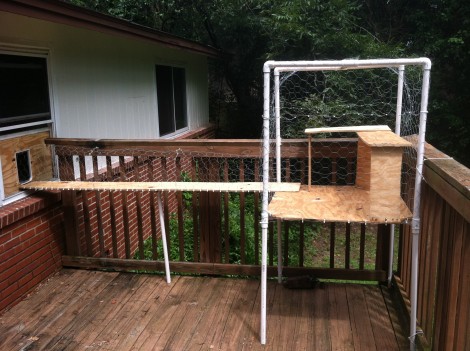See, this is what happens when pizza lovers follow their dreams. It probably started innocently enough for [phammy57]—he got a pizza stone, then maybe one of those big rocking pizza cutters. Maybe he even learned how to toss the dough high in the air. But every time [phammy57] slid one of those homemade pies into the electric oven, the nagging feeling grew a little stronger. Eventually, he gave in to making pizza the way it’s supposed to be made, and built a wood-fired oven.
The most intriguing thing about this build is also the most important: this pizza preparer pivots on a gym ball, which served as the base for forming the oven. To do this, [phammy57] pushed the ball halfway through a hole in a big piece of plywood, effectively creating the world’s largest Pogo Bal (remember those?). Then he applied plastic wrap to the ball as a mold release, and laid down a thick mixture of vermiculite, cement, and water.
[phammy57] built the base from lightweight blocks, sculpting a nice arch for the top of the wood storage area. Once the dome was fastened to the base with the opening cut and outlined with brick, he cut a vent hole and built the chimney. Finally, it was time to add insulating blanket material, chicken wire, more vermiculite, and coat of plaster to finish. Take a brief look inside after the break.
It’s a long process of building, curing, and burning in, but the end result looks fantastic. We bet it pizzas like a champ, too. Probably gives this 45-second pizza oven a run for its money.
[Ed Note: If you’re still having trouble parsing the title, try it out with “build” as a noun and “exercises” as a verb.]
Continue reading “Pizza Oven Build Exercises Forgotten Gym Ball”

















